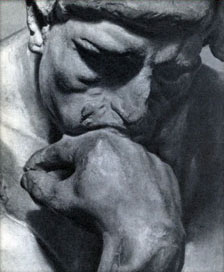Melissus of Samos (fl. mid-fifth century B.C.), Greek philosopher, traditionally classified as a member of the Eleatic School. He was also famous as the victorious commander in a preemptive attack by the Samians on an Athenian naval force (441 B.C.). Like Parmenides – who must have influenced Melissus, even though there is no evidence the two ever met – Melissus argues that ‘what-is’ or ‘the real’ cannot come into being out of nothing, cannot perish into nothing, is homogeneous, and is unchanging. Indeed, he argues explicitly (whereas Parmenides only implies) that there is only one such entity, that there is no void, and that even spatial rearrangement (metakosmesis) must be ruled out. But unlike Parmenides, Melissus deduces that what-is is temporally infinite (in significant contrast to Parmenides, regardless as to whether the latter held that what-is exists strictly in the ‘now’ or that it exists non-temporally). Moreover, Melissus argues that what-is is spatially infinite (whereas Parmenides spoke of ‘bounds’ and compared what-is to a well-made ball). Significantly, Melissus repeatedly speaks of ‘the One.’ It is, then, in Melissus, more than in Parmenides or in Zeno, that we find the emphasis on monism. In a corollary to his main argument, Melissus argues that ‘if there were many things,’ each would have to be – per impossibile – exactly like ‘the One.’ This remark has been interpreted as issuing the challenge that was taken up by the atomists. But it is more reasonable to read it as a philosophical strategist’s preemptive strike: Melissus anticipates the move made in the pluralist systems of the second half of the fifth century, viz., positing a plurality of eternal and unchanging elements that undergo only spatial rearrangement. See also ELEATIC SCHOOL, PARMENIDES , PRE -SOCRATIC. A.P.D.M.
